- Home
- Roxane Gay
Bad Feminist: Essays Page 6
Bad Feminist: Essays Read online
Page 6
Girls also represents a very privileged existence—one where young women’s New York lifestyles can be subsidized by their parents, where these young women can think about art and unpaid internships and finding themselves and writing memoirs at twenty-four. Many people are privileged, and again, it’s easy to resent that because the level of privilege expressed in the show reminds us that sometimes, success really starts with where you come from. Girls is a fine example of someone writing what she knows and the painful limitations of doing so.
One of the most significant critiques of Girls is the relative absence of race. The New York where Girls takes place is much like the New York where Sex and the City was set—a mythical city completely void of the rich diversity of the very real New York. The critique is legitimate, and people across many publications have written deeply felt essays about why it is damaging for a show like Girls to completely negate certain experiences and realities. In the second season, Girls tried and failed to bring race into the show in a relevant way. During the premiere, Hannah has a black boyfriend and it’s handled fairly well. The boyfriend, Sandy, is conservative, and there’s a clever moment in which Hannah claims she doesn’t see race, thereby exposing that she is not nearly as evolved as she might believe. The episode is smart, but not smart enough because it misses the point—clever defiance does not a diversity problem address.
Every girl or once-was-girl has a show that would be best for her. In Girls we finally have a television show about girls who are awkward and say terribly inappropriate things, are ill equipped to set boundaries for themselves and have no idea who they’re going to be in a few years. We have so many expectations for this show because Girls is a significant shift in what we normally see about girls and women. While critics, in their lavish attention, have said Dunham’s show is speaking to an entire generation of girls, there are many of us who recognize that the show is only speaking to a narrow demographic within a generation.
Maybe the narrowness of Girls is fine. Maybe it’s also fine that Dunham’s vision of coming-of-age is limited to the kinds of girls she knows. Maybe, though, Dunham is a product of the artistic culture that created her—one that is largely myopic and unwilling to think about diversity critically.
We all have ideas about the way the world should be, and sometimes we forget how the world is. The absence of race in Girls is an uncomfortable reminder of how many people lead lives segregated by race and class. The stark whiteness of the cast, their upper-middle-class milieu, and the New York where they live force us to interrogate our own lives and the diversity, or lack thereof, in our social, artistic, and professional circles.
Don’t get me wrong. The stark whiteness of Girls disturbs and disappoints me. During the first season, I wondered why Hannah and her friends didn’t have at least one blipster friend or why Hannah’s boss at the publishing house or one or more of the girls’ love interests couldn’t be an actor of color. The show is so damn literal. Still, Girls is not the first show to commit this transgression, and it certainly won’t be the last. It is unreasonable to expect Dunham to somehow solve the race and representation problem on television while crafting her twenty-something witticisms and appalling us with sex scenes so uncomfortable they defy imagination.
In recent years, I have enjoyed looking at pictures from literary events, across the country, wondering if I will see a person of color. It’s a game I play that I generally win. Whether the event takes place in Los Angeles or New York City or Austin or Portland, more often than not, the audiences at these events are completely white. Sometimes, there will be one or two black people, perhaps an Asian. At most of these literary events I attend, I am generally the only spot of color, even at a large writers’ conference like Association of Writers & Writing Programs events. It’s not that people of color are deliberately excluded but that they are not included because most communities, literary or otherwise, are largely insular and populated by people who know the people they know. This is the uncomfortable truth of our community, and it is disingenuous to be pointing the finger at Girls when the show is a pretty accurate reflection of many artistic communities.
There’s more, though, to this intense focus on privilege and race and Girls. Why is this show being held to the higher standard when there are so many television shows that have long ignored race and class or have flagrantly transgressed in these areas?
There are so many terrible shows on television representing women in sexist, stupid, silly ways. Movies are even worse. Movies take one or two anemic ideas about women, caricature them, and shove those caricatures down our throats. The moment we see a pop artifact offering even a sliver of something different—say, a woman who isn’t a size zero or who doesn’t treat a man as the center of the universe—we cling to it desperately because that representation is all we have. There are all kinds of television shows and movies about women but how many of them make women recognizable?
There are few opportunities for people of color to recognize themselves in literature, in theater, on television, and in movies. It’s depressingly easy for women of color to feel entirely left out when watching a show like Girls. It is rare that we ever see ourselves as anything but the sassy black friend or the nanny or the secretary or the district attorney or the magical negro—roles relegated to the background and completely lacking in authenticity, depth, or complexity.
One of the few equivalents to Girls we’ve ever had was Girlfriends, created by Mara Brock Akil. Girlfriends debuted in 2000 and ran for 172 episodes. It followed the lives and close friendships of four black women in Los Angeles—Joan (Tracee Ellis Ross), Maya (Golden Brooks), Lynn (Persia White), and Toni (Jill Marie Jones). I particularly admire how the show rarely made race its focal point. Joan, Maya, Lynn, and Toni simply lived their lives. They were all professionals (a lawyer, a writer and secretary, a real estate agent, and an artist/actress/whimsy of the week) who dealt with job stresses, romantic troubles, romantic successes, and new adventures, and tried to become better women. It took me years to appreciate Girlfriends and I’m not sure why, but once I fell in love with the show, I fell hard. Finally, I was able to recognize something about myself in popular culture. The writing was smart and funny, and the show did a good job of depicting the lives of women of color in their late twenties and thirties. The show wasn’t perfect, but the women were human and they were portrayed humanely. Girlfriends, to be sure, is a show that never received the critical attention or audience it deserved, but it lasted for eight seasons and still has a very dedicated fan base of women who remain so relieved to see themselves in some small way.
Women of color come of age and have the same experiences Dunham depicts in her shows, but we rarely see those stories because they don’t fit the popular imagination’s rendering of Other girlhood, which is generally nonexistent in popular culture. At least there have been a few shows for black women to recognize themselves—the aforementioned Girlfriends, Living Single, A Different World, The Cosby Show. What about other women of color? For Hispanic and Latina women, Indian women, Middle Eastern women, Asian women, their absence in popular culture is even more pronounced, their need for relief just as palpable and desperate.
The incredible problem Girls faces is that all we want is everything from each movie or television show or book that promises to offer a new voice, a relatable voice, an important voice. We want, and rightly so, to believe our lives deserve to be new, relatable, and important. We want to see more complex, nuanced depictions of what it really means to be whoever we are or were or hope to be. We just want so much. We just need so much.
I’m more interested in a show called Grown Women about a group of friends who finally have great jobs and pay all their bills in a timely manner but don’t have any savings and still deal with sloppy love lives and hangovers on Monday morning at work. That show doesn’t exist, though, because stability holds little allure for the popular imagination and Hollywood rarely acknowledges women of a certain age. Until that show comes along
or I decide to write it, we have to deal with what we have.
I Once Was Miss America
In 1984, Vanessa Williams became Miss America. She would later have to step down because of a nude photo scandal, but when she was first crowned it was an amazing moment for black girls everywhere. Williams was the first black woman to wear the Miss America crown in the pageant’s sixty-three-year history. I was not the kind of girl who cared much about pageants or being a beauty queen, but watching Williams and her perfect cheekbones and glittering teeth as she accepted the crown gave girls like me ideas. That moment made us believe we too could be beautiful.
While Vanessa Williams offered black girls a new image of who the All-American Girl could be, the more traditional image of the All-American Girl could be found in Sweet Valley, an idyllic town in sunny Southern California where the lawns are perfectly manicured. Everyone is fit and beautiful and successful. As is the case in most perfect places, life in Sweet Valley is episodic. There is a narrative arc to each day or week or month, always a valuable lesson to be learned from life’s experiences. The endings, in Sweet Valley, are mostly happy. The meek inherit. All good things come to those who wait. There is nowhere in the world like Sweet Valley.
Elizabeth and Jessica Wakefield are the sweethearts of Sweet Valley. They are blond and thin and perfect even with all their human flaws. The Wakefield sisters are twins—twice the perfection. Elizabeth is the good twin, and Jessica is the more rebellious twin. Jessica is a bad, bad girl, even though in Sweet Valley, a bad girl is never quite that bad. The sisters wear matching lavaliere necklaces, and they drive a red Fiat. Elizabeth and Jessica love each other and are best friends, but they are also rivals. Sisters are complicated even when they are perfect.
Elizabeth is responsible and universally adored for her sweetness and patience. She wants to be a journalist. She loves Todd Wilkins, a tall, handsome, and popular basketball player. She works on the school paper and is a cheerleader—smart and athletic, the perfect combination.
Jessica likes boys and partying. She is charming and enjoys gossip, flirting, and shopping. She loves to borrow Elizabeth’s clothes, and Elizabeth puts up with it because you cannot say no to Jessica Wakefield. She’s a cheerleader too, and although she comes off as a bit of an airhead, Jessica has depth and intelligence. She sometimes says unkind things, but that’s because she is impulsive and has a bit of a temper. She’s all emotion. Jessica is the kind of girl who gives in to her impulses, while Elizabeth controls her urges, at least most of the time.
The Wakefield twins aren’t real; they are the main characters of the Sweet Valley High series. I started reading the Sweet Valley High books when I was eight or nine years old. I was cross-eyed and wore thick bifocals. Other than my younger brother, I was the only black kid in school, so I was going to be noticed even though I wanted very much to go unnoticed. I was shy and awkward and didn’t know how to fix myself. My hair was wild, stood on end, earning me the inexplicable nicknames Hair, Beard, and Mustache even though I had neither a beard nor a mustache. My classmates also called me Don King. I looked nothing like Don King. He’s a man, for one. I was told my parents “talked funny,” which I later realized was a reference to their thick Haitian accents, which I did not hear until they were pointed out to me, and then suddenly those accents were all I heard. I read books while I walked to school. I had the strangest laugh—somewhat halted and tentative—and a bit of a bucktooth situation. I regularly wore overalls by choice and didn’t really know any curse words, so that should give you a sense of where I was on the social ladder—reaching for the bottom rung.
When I first started reading Sweet Valley High books, I wanted girls like the Wakefield twins to love me. I wanted the handsome boys who chased girls like those Wakefield twins to love me. I wanted the popular kids to pull me into the shelter of their golden embrace and make me popular too. Popularity is contagious. Many movies from the 1980s bear this theory out. I had hope, is what I’m saying, though certainly that hope was fragile.
There was one particular group of golden, popular kids at my school. They’re in every school, an interchangeable infestation of good genes and big smiles and perfect hair and Guess or Girbaud jeans. I don’t remember much about grade school, but I remember the first and last names of the popular kids. If I returned to my childhood neighborhood, I could point out their houses and other geographical points of interest. I watched the popular kids all the time, trying to figure out how to breathe the air in their atmosphere. They were so American and, therefore, exotic because they had freedoms I did not. I was a different kind of American. I had conservative Haitian parents who wanted the best for their kids but were also very wary of American permissiveness. I was American at school and Haitian at home. This required negotiating a fine balance, and I am a clumsy person.
There is nothing more desperate and unrequited than the love an unpopular girl nurtures for the cool kids. One day, the kids in the popular clique were teasing me, about what, I do not remember. I got angrier and angrier as they taunted me, not only because they were teasing me but also because I was so painfully aware of the gaping distance between where we were and where I wanted us to be—walking through the mall, arm in arm, or sharing secrets at a slumber party, or gossiping about cute boys. I liked the mall. I had secrets. I liked cute boys.
That day, though, I needed to come up with a snappy retort to show them they couldn’t push me around, to show them I was cool too, to stand my ground. I pointed my fingers at them like Miss Celie laying a curse on Mister in The Color Purple, and I shouted, “One day, just you wait and see. I’m going to become Miss America.” That was my mother’s nickname for me, Miss America. I’m her beloved firstborn, her first child born in these United States. I loved my nickname. Those popular kids laughed and laughed. For the rest of that year and into the next, they teased me mercilessly about being Miss America, asking how my campaign was going, making comments about sashes and crowns, prancing around in front of me doing the Miss America wave. They incorporated props. Those kids made it clear I didn’t have a shot in hell at the crown, but I’m stubborn and Vanessa Williams had won Miss America so I began to sincerely believe I was going to become Miss America. I reminded my classmates of my belief regularly, which only fueled their petty torments. I have no idea where I was going with that strategy.
The Sweet Valley High books were extremely popular when I was young, and most girls immediately identified as an Elizabeth or a Jessica. Most of the people who knew me would assume I was an Elizabeth, minus her popularity, but I wasn’t. In my head and in my heart, I was a bad girl: misunderstood and interesting. I was a Jessica—a girl who was confident and sexy and smart, a girl everyone wanted to be around. I was the future Miss America, ordained by my mother and Vanessa Williams.
I always knew there was something unnatural about Sweet Valley. I did not care. I still don’t. I was well aware not everyone lives in a perfect suburb with perfect parents leading perfect lives. I had been to Haiti, seen incomprehensible poverty with my own eyes, so I knew my relatively good fortune was an accident of birth. I knew there is rarely such a thing as a happy ending. I understood that the Sweet Valley High books espouse an unrealistic, narrow ideal of beauty (blond, white, thin) and that any town where everyone looks and acts the same is not to be trusted. The one time a citizen of Sweet Valley (Steven Wakefield, the twins’ older brother) dated interracially, that relationship lasted for only one book (#94) because the couple decided, in the end, that they were too different. I also knew that verdict was suspect.
Like many writers, I lived inside of books as a child. Inside books I could get away from the impossible things I had to deal with. When I read I was never lonely or tormented or scared. I read everything I could get my hands on, and my parents indulged and encouraged me. They were strict about things like television and grades, but they never censored my reading material or questioned my love of Sweet Valley. We moved around a lot for my father’s job, but Sweet Valley n
ever moved and the people never changed. The kids in Sweet Valley were a constant, and in a small, poignant way, they were my friends.
I waited for new Sweet Valley High books the way other kids waited for new comics or movie releases. Each time my mother took me to the mall, I went straight to Waldenbooks and quickly scanned the shelves in the Young Adult section, wondering what the twins and their friends and enemies would get into next. When the series began churning out thick super editions, I could have died and gone to Sweet Valley heaven. As my collection of Sweet Valley High books grew, I maintained the set meticulously, keeping the books in perfect order and pristine condition. Sometimes my brothers would sneak into my room and reorder the books. Minor skirmishes would erupt between us that often ended with me doing something like burying their favorite toys in the backyard. I was quite serious about my Sweet Valley High books.
Nostalgia is powerful. It is natural, human, to long for the past, particularly when we can remember our histories as better than they were. Life happens faster than I can comprehend. I am nearly forty, but my love of Sweet Valley remains strong and immediate. When I read the books now, I know I’m reading garbage, but I remember what it was like to spend my afternoons in Sweet Valley, hanging out with the Wakefield twins and Enid Rollins and Lila Fowler and Bruce Patman and Todd Wilkins and Winston Egbert. The nostalgia I feel for these books and these people makes my chest ache.
When I learned Francine Pascal was releasing Sweet Valley Confidential, an update to the Sweet Valley High series, set ten years into the future, I basically lost my shit and began obsessing about what was going down in Sweet Valley. I began marking the days until the book’s release.

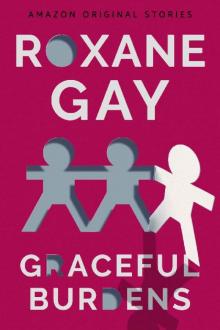 Graceful Burdens (Out of Line collection)
Graceful Burdens (Out of Line collection)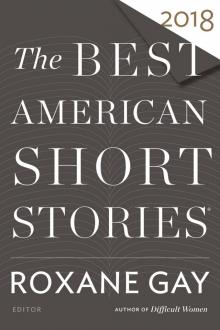 The Best American Short Stories 2018
The Best American Short Stories 2018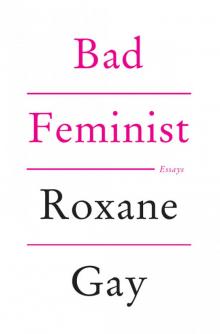 Bad Feminist
Bad Feminist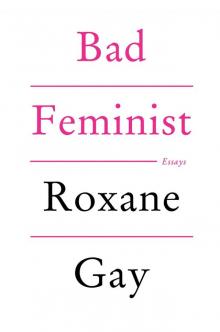 Bad Feminist: Essays
Bad Feminist: Essays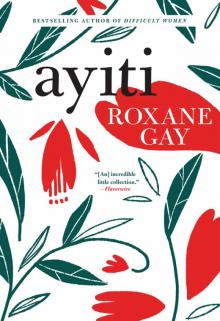 Ayiti
Ayiti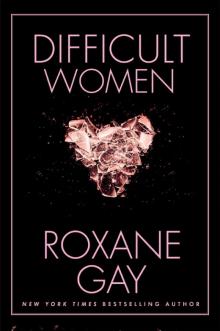 Difficult Women
Difficult Women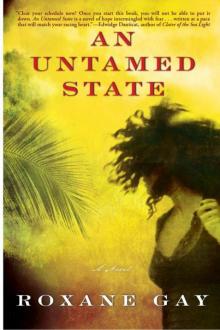 An Untamed State
An Untamed State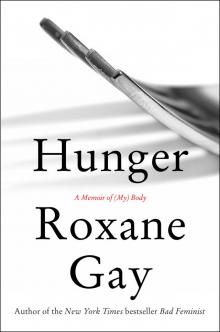 Hunger
Hunger